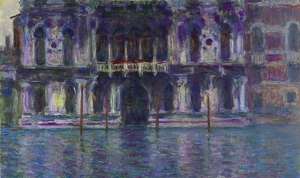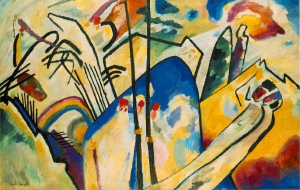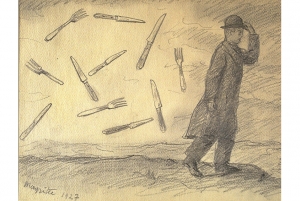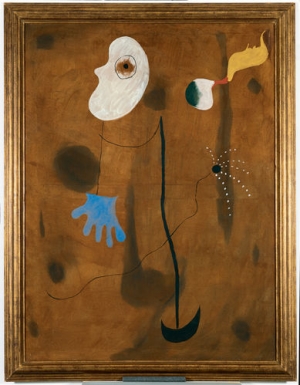|
Displaying items by tag: max ernst
In a decision that should bring some relief to art experts, the German art historian and the former director of the Centre Pompidou, Werner Spies, no longer has to pay a fee for mistakenly authenticating a painting as a genuine work by Max Ernst. On 3 December, the Versailles Court of Appeal overturned a 2013 ruling against Spies that ordered him to reimburse the collector Louis Reijtenbagh for a work that turned out to be a fake produced by the forger Wolfgang Beltracchi.
The Baltimore Museum of Art today announced it recently added René Magritte’s 1967 sculpture "Delusions of Grandeur" to its renowned collection of modern art. This monumental bronze was created by the Belgian artist during the last year of his life and there are very few casts. The work came to the BMA as a gift of National Trustee Sylvia de Cuevas and is the first sculpture by Magritte to enter the collection. It will be displayed, beginning this week, in a gallery with works by Magritte’s contemporaries: Max Ernst, Alberto Giacometti, André Masson, and Joan Miró.
“We are thrilled to welcome this remarkable sculpture into the BMA’s celebrated collection of modern art,” said BMA Director Doreen Bolger. “This imaginative artwork so well represents Magritte’s unique vision and is sure to become one of the most memorable artworks on view here.”
As a technique for creating art, frottage is so closely identified with Surrealism, in general, and Max Ernst, in particular, that the link itself might be an example of the technique.
"Frottage" is French for "rubbing," and it rubbed off on the boisterous Surrealist movement that in the troubled decades between the two World Wars was dedicated to unleashing the creative potential of the unconscious mind. When a sheet of paper is laid over a textured surface and rubbed with pencil or pastel, unexpected and evocative shapes, forms and tonalities can be produced.
In Spring 2015, Paris’ Centre Pompidou plans to open a temporary outpost in Malága, Spain, the birthplace of Pablo Picasso. “Pop-Up Pompidou” will present rotating exhibitions pulled from the Centre Pompidou’s permanent collection -- the largest modern and contemporary art collection in Europe. So far, Max Ernst’s “The Imbecile,” Francis Bacon’s “Self-Portrait,” and Picasso’s “The Flowered Hat 10/04/1940” are among the pieces expected to go on view at the pop-up museum.
The Malága City Hall will provide the institution with the iconic building “El Cubo,” or The Cube, a large glass-and-steel structure located on the city’s port, which is among the oldest ports in the world
Since the discovery of a long-hidden trove of masterworks in Germany last year, advocates have sought to shine a spotlight on looted artworks hiding in plain sight.
In other words, those hanging on the walls of Europe’s great museums.
Enter France, known as the art attic of Europe before World War II and where tens of thousands of works were taken from Jewish families by the occupying Nazis. Today, more than 2,000 pieces returned to France after the war — including canvases by Claude Monet, Peter Paul Rubens and Max Ernst — remain in the custody of the Louvre, the Musée d’Orsay and other celebrated French institutions.
A high-end art dealer was robbed at knifepoint in his Upper East Side pad by a handyman who took off with some cash — but left a showroom full of pricey artwork on the walls, officials said.
Paul Quatrochi, whose stable of wealthy collectors includes Penthouse publisher Bob Guccione, Baron Heinrich von Thyssen and Austrian Princess Michaela von Hapsburg, said he had a knife pressed against his throat for nearly 30 minutes while his guest rifled through his pockets and stole $300 in cash.

The Evening Sale of Impressionist & Modern Art that took place at Sotheby’s London on June 19, 2013 garnered $165.9 million, surpassing its high estimate of $164.3 million. The auction, which featured 71 works, sold 81.7% by lot and bidders hailed from 33 countries around the world.
The sale’s top lot was Claude Monet’s (1840-1926) painting of Venice, Le Palais Contarini (1908), which sold for $30.8 million after a three-way bidding battle. Other highlights included a Piet Mondrian (1872-1944) painting in the artist’s quintessential palette titled Red, Yellow and Blue (1927), which was scooped up by a telephone bidder for $14.5 million and Wassily Kandinsky’s (1866-1944) Bauhaus-era work on paper Ineinander (1928). A number of Surrealist works fared well at the sale including Max Ernst’s (1891-1976) La Horde (1927), which sold to New York’s Acquavella Galleries for $3.2 million and René Magritte’s (1898-1967) L’Idee, which features one of the artist’s well-known floating green apples and brought $7.1 million.
Helena Newman, Chairman of Sotheby’s Impressionist & Modern Art Department in Europe, said, “There was an extraordinary dynamic at play in the sale room. Established collectors – drawn out by the quality of the estate collections presented in the sale – competed with many of the new contender’s in today’s market. Record levels of participation were driven by a truly global audience.”
The evening auctions continue at Christie’s London on June 25, 2013 with its Post-War and Contemporary Art sale.

German police arrested two people and raided 28 locations in an effort to halt a multi-million dollar international forgery ring responsible for selling fake paintings they claimed were by Russian avant-garde artists including Wassily Kandinsky (1866-1944). Apartments, business premises, and art galleries in Wiesbaden, Mainz, Suttgart, Munich, and Hamburg were searched by police officers. Over 1,000 items were seized including supposed forgeries and sales documents. Additional searches were carried out in Switzerland and Israel.
The forgers are believed to have sold over 400 works ranging in price from $1,332 to over $1 million since 2005, accruing more than $2.7 million. The two men who were arrested are believed to be the leaders of an international group of six counterfeiters. Private collectors in Germany and Spain acquired most of the fakes sold by the forgery ring.
Confidence in the German art market has been unstable since it was shaken by the largest forgery scandal to date in 2011. Art forger Wolfang Betrachhi was sentences to six years in jail after admitting to painting copies of works by Fernard Leger (1881-1955) and Max Ernst (1891-1976) and then selling them as masterpieces to unwitting collectors.

Surrealism, a cultural movement that includes visual arts, literature, film, and music, began in the 1920s with the musings of the French writer and poet, André Breton (1896-1966). Now celebrated and studied for its innovative and daring nature, surrealism pushed the boundaries in regard to established aesthetics and artistic techniques. While experimenting with modern conventions, surrealist masters such as Salvador Dalí (1904-1989), Max Ernst (1891-1976), René Magritte (1898-1967), and Joan Miró (1893-1983) went on to create some of the most revered artworks of the 20th century.
Drawing Surrealism, an exhibition at The Morgan Library & Museum in New York, explores the surrealists’ relationship with drawing. While most exhibitions and scholars tend to focus on the surrealists’ paintings and sculptures, drawing played a pivotal part in the movement. The medium, which is highly connected to the brain and offers a sense of immediacy and spontaneity, was the perfect vehicle for the surrealists who valued the subconscious mind, dream imagery, language, and happenstance. The Surrealists used techniques such as automatic drawing and frottage, which requires rubbing graphite or another drawings material on a sheet of paper that is place over a textured surface, to bypass the conscious mind, creating instinctive and inimitable works.
Drawing Surrealism, which is co-organized with the Los Angeles County Museum of Art (LACMA), presents over 165 works on paper and occupies two of the Morgan’s galleries. The exhibition is organized chronologically, illustrating how surrealist drawing techniques evolved and spread throughout the world over time. The Morgan, LACMA, Tate Modern (London), the Pompidou Center (Paris), the Museum of Modern Art (New York), and the Menil Collection (Houston) all contributed works for the exhibition.
Drawing Surrealism will be on view at the Morgan Library & Museum through April 21, 2013.

Major Surrealist art collectors, Ulla and Heiner Pietzsch, are hoping to donate their impressive holdings to the city of Berlin. The only problem is there doesn’t seem to be room in any of the museums for the works. Worth nearly $200 million, the Pietzsch’s collection includes pieces by Salvador Dali (1904-1989), Max Ernst, (1891-1976) Rene Magritte (1898-1967), Yves Tanguy (1900-1955), and Joan Miro (1893-1983). The result of over fifty years of fervent collecting, the Pietzsch’s collection is currently hanging on the walls of their home in a suburb of Berlin.
The Pietzsches lent their collection to Berlin’s Neue Nationalgalerie for an exhibition in 2009. The show drew almost 200,000 visitors and proved that their holdings would be an asset to the city’s art offerings. Upon seeing the public’s high level of interest in their collection, the Pietzsches decided to donate the works to Berlin after their deaths; their only stipulation is that the works be kept on permanent display.
Earlier this year, officials suggested moving the Berlin’s Old Master paintings to make room for 20th century works but an online petition and spate of angry newspaper columns ensued. Authorities are currently working on plans to accommodate the gift.
One option currently being explored is the construction of an entirely new museum to house the Old Masters collection. If the city decides to do so, the Gemaeldegalerie at Potsdamer Platz would be freed up for 20th century art, including the Pietzsch’s collection. Currently, the only space in Berlin for 20th century art is at the Ludwig Mies van der Rohe-designed Neue Nationalgalerie. However, the space is too small to display all of Berlin’s holdings, much less the Pietzsch’s expansive collection.
Officials aim to release alternative plans to accommodate the Pietzsch gift during the first half of 2013.
|
|
|
|
|